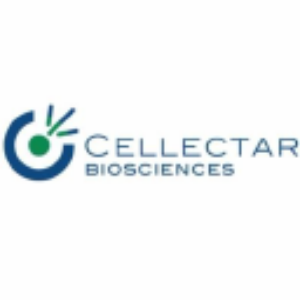Cellectar Biosciences Highlights Promising Interim Data from Its Ongoing Study of Iopofosine I 131 in Multiple Myeloma in an Oral Presentation at the SNMMI Annual Meeting
Interim data from 64 refractory multiple myeloma patients demonstrated an ORR of
Demonstrated a
FLORHAM PARK, N.J., June 28, 2023 (GLOBE NEWSWIRE) -- Cellectar Biosciences, Inc. (NASDAQ: CLRB), a late-stage clinical biopharmaceutical company focused on the discovery, development and commercialization of targeted drugs for the treatment of cancer, today announced it presented data at the Society of Nuclear Medicine and Molecular Imaging (SNMMI) Annual Meeting from 64 evaluable, relapsed, or refractory multiple myeloma (MM) patients in which iopofosine I 131 demonstrated an overall response rate (ORR) of
“Our first-in-class targeted radiotherapy, iopofosine I 131, continues to deliver impressive results in patients with hematologic cancers. Currently, there is a significant unmet need for patients with refractory multiple myeloma, who essentially have no treatment options once previous therapies stop working,” said Andrei Shustov, MD, senior vice president, medical. “Our data demonstrates that iopofosine I 131, with its ability to specifically target cancer cells, has the potential to provide a next-generation cancer-targeting treatment in multiple myeloma.”
The company’s chief operating officer, Jarrod Longcor, presented data on a total of 72 post-5th line MM patients, of which 64 were evaluable and with
Key data in the patients receiving >60 mCi TAD included:
- Overall response rate (ORR) of
32% , - Clinical benefit rate (CBR) of
75% - Disease control rate (DCR) of
85.7% .
Key data in patient subsets that were highly refractory and received >60 mCi TAD included:
46% ORR in triple-class refractory patients, median PFS of 3.4 months (n=18)50% ORR in quad-class refractory patients, PFS evaluation ongoing (n=6)50% ORR in post BCMA relapsed or refractory patients, median PFS of 3.3 months (n=6)
The most commonly observed treatment emergent adverse events were consistent with those previously reported: cytopenias including Grade 3 or 4 thrombocytopenia (
“We look forward to providing additional data as we continue to enrich the Phase 2 CLOVER-1 study with additional multiple myeloma and central nervous system lymphoma patients,” said Jarrod Longcor, chief operating officer. “In parallel, our ongoing pivotal trial in Waldenstrom’s macroglobulinemia remains on track to announce top-line data later this year and to submit a New Drug Application for Fast Track review by the FDA with an anticipated product launch in the fourth quarter of 2024.”
The U.S. Food and Drug Administration (FDA) granted Fast Track and Orphan Drug Designations (ODD) and the European Commission granted ODD for iopofosine in patients with r/r MM. Patients in the trial received up to four (4), approximately 15-minute IV infusions of iopofosine over three (3) months, with doses given 14 days apart in each cycle with a maximum of two (2) cycles. Low-dose dexamethasone 40 mg weekly (20mg in patients ≥ 75), was provided for up to 12 weeks.
A copy of the poster is available on the Posters and Publications section of the company’s website.
About iopofosine I 131
Iopofosine is a small-molecule Phospholipid Drug Conjugate™ designed to provide targeted delivery of iodine 131 (radioisotope) directly to cancer cells, while limiting exposure to healthy cells. We believe this profile differentiates iopofosine from many traditional on-market treatments. Iopofosine is currently being evaluated in the CLOVER-WaM Phase 2 pivotal study in patients with relapsed/refractory (r/r) Waldenstrom’s macroglobulinemia (WM), including those who have failed or had a suboptimal response to Bruton tyrosine kinase inhibitors; a Phase 2b study in r/r multiple myeloma (MM) patients; and the CLOVER-2 Phase 1 study for a variety of pediatric cancers. The U.S. Food and Drug Administration granted iopofosine Fast Track Designation for WM patients having received two or more prior treatment regimens, as well as r/r MM and r/r diffuse large B-cell lymphoma (DLBCL). Orphan Drug Designations (ODDs) have been granted for WM, MM, neuroblastoma, rhabdomyosarcoma, Ewing’s sarcoma and osteosarcoma. Iopofosine was also granted Rare Pediatric Disease Designation (RPDD) for the treatment of neuroblastoma, rhabdomyosarcoma, Ewing’s sarcoma and osteosarcoma. The European Commission granted ODDs for r/r MM and WM.
About Cellectar Biosciences, Inc.
Cellectar Biosciences is a late-stage clinical biopharmaceutical company focused on the discovery and development of proprietary drugs for the treatment of cancer, independently and through research and development collaborations. The company’s core objective is to leverage its proprietary Phospholipid Drug Conjugate™ (PDC) delivery platform to develop the next-generation of cancer cell-targeting treatments, delivering improved efficacy and better safety as a result of fewer off-target effects.
The company’s product pipeline includes lead asset iopofosine, a small-molecule PDC designed to provide targeted delivery of iodine-131 (radioisotope), proprietary preclinical PDC chemotherapeutic, oligo and peptide programs and multiple partnered PDC assets.
For more information, please visit www.cellectar.com and www.wmclinicaltrial.com or join the conversation by liking and following us on the company’s social media channels: Twitter, LinkedIn, Facebook and Instagram.
Forward-Looking Statement Disclaimer
This news release contains forward-looking statements. You can identify these statements by our use of words such as "may," "expect," "believe," "anticipate," "intend," "could," "estimate," "continue," "plans," or their negatives or cognates. These statements are only estimates and predictions and are subject to known and unknown risks and uncertainties that may cause actual future experience and results to differ materially from the statements made. These statements are based on our current beliefs and expectations as to such future outcomes including our expectations of the impact of the COVID-19 pandemic. Drug discovery and development involve a high degree of risk. Factors that might cause such a material difference include, among others, uncertainties related to the ability to raise additional capital, uncertainties related to the disruptions at our sole source supplier of iopofosine, the ability to attract and retain partners for our technologies, the identification of lead compounds, the successful preclinical development thereof, patient enrollment and the completion of clinical studies, the FDA review process and other government regulation, our ability to maintain orphan drug designation in the United States for iopofosine, the volatile market for priority review vouchers, our pharmaceutical collaborators' ability to successfully develop and commercialize drug candidates, competition from other pharmaceutical companies, product pricing and third-party reimbursement. A complete description of risks and uncertainties related to our business is contained in our periodic reports filed with the Securities and Exchange Commission including our Form 10-K for the year ended December 31, 2022, and our Form 10-Q for the quarter ended March 31, 2023. These forward-looking statements are made only as of the date hereof, and we disclaim any obligation to update any such forward-looking statements.
Investor Contact:
Monique Kosse
Managing Director
LifeSci Advisors
212-915-3820
monique@lifesciadvisors.com










